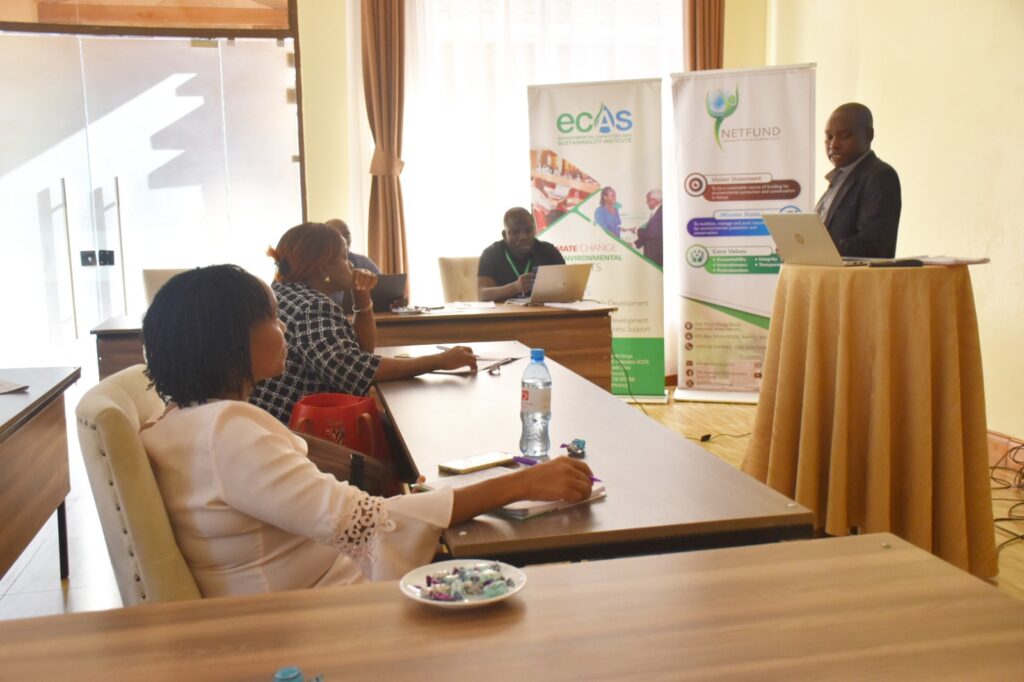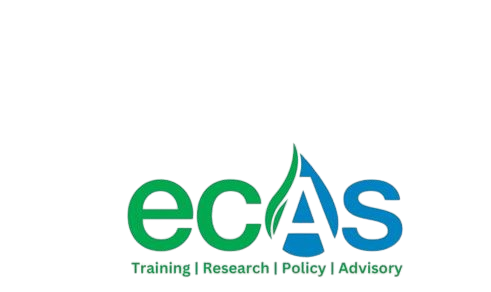
INTERNATIONAL TRAINING ON SUSTAINABLE FINANCING OF FOREST AND LANDSCAPE RESTORATION
COURSE BACKGROUND
To meet global commitments for restoring degraded landscapes, significant funding is needed. This investment must come from both public and private sources and be well-coordinated. Many practitioners and policymakers, however, struggle to identify financial needs, find opportunities, and secure money for Forest and Landscape Restoration (FLR).
ECAS Institute understands that effective restoration requires strong financial backing. We aim to raise awareness and improve the skills of those involved in FLR to better analyze financial needs and secure funding. This course helps ensure that vital restoration projects have the necessary financial support.
This training is designed to help participants become more effective at finding and coordinating funds for FLR. It will cover costs, investor priorities, overcoming investment barriers, and using various financing mechanisms. By improving financial awareness, ECAS aims to boost the success of FLR interventions worldwide.
COURSE OBJECTIVES OF THE TRAINING
Upon completion of this training, participants will be able to:
- Understand the costs and benefits of FLR and related financing needs.
- Identify what makes a landscape ‘investment ready’.
- Characterize the different types of FLR investors and their priorities.
- Recognize the barriers to accessing FLR investment and steps to creating an enabling environment.
- Explain various financial and market-based mechanisms for financing FLR interventions.
- Understand the importance of coordinating different investment types and financing mechanisms to support FLR.
- Emphasize the importance of communication and building and strengthening alliances in securing FLR finance.
WHAT YOU WILL LEARN
This course has been developed to improve the awareness and capacities of practitioners and policy makers to analyze FLR financial needs and opportunities so that they are more effective at securing and coordinating funding for FLR interventions. You will learn:
- The costs and benefits of FLR and related financing needs.
- What makes a landscape ‘investment ready’.
- The different types of FLR investors and their priorities.
- The barriers to accessing FLR investment and creating an enabling environment.
- Financial and market-based mechanisms for financing FLR interventions.
- The importance of coordinating different investment types and financing mechanisms to support FLR.
- The importance of communication and building and strengthening alliances.
DURATION AND PROGRAM
This is a structured training course, consisting of three lessons, the program is designed to provide practical insights into securing and coordinating funding for FLR interventions, combining theoretical knowledge with real-world examples. The detailed program schedule, including specific session timings and opportunities for interactive discussions, will be communicated prior to the training commencement.
TARGET PARTICIPANTS
This course is designed for a range of stakeholders with an interest in forest and landscape restoration, including practitioners and policymakers from:
- International and regional organizations and donors;
- National governments;
- Private sector;
- Non-governmental organizations (NGOs); and
- Research institutes and universities.
TRAINING MODULES
The course consists of three focused lessons, designed to guide participants through the essential aspects of financing Forest and Landscape Restoration:
| No | Module | Details | |
| 1. | Introduction to FLR Financing |
This module provides a foundational understanding of the financial landscape for FLR, outlining the costs and benefits of restoration and the overall financing needs.
|
|
| 2. | Enabling FLR Financing |
This module focuses on creating an environment conducive to attracting and securing FLR investments, including understanding investor perspectives and overcoming common barriers.
|
|
| 3. | Financing Mechanisms for Local Investment in FLR |
This module delves into specific financial and market-based mechanisms that can be utilized to fund FLR interventions, emphasizing local investment and coordination.
|
|
TRAINING STYLE
The modules will be taught through PowerPoint presentations, and lectures and will include a case study/field visit, breakout sessions, case studies and other interactive discussion components.
The course will also include a few guest speakers, both in person and via Zoom and other online learning platforms for overseas speakers. This provides useful real-world insights alongside the more theoretical aspects of the course.
The conference faculty shall consist of experienced decision makers, as well as practitioners and representatives from established educational and research institutions active around climate change, engineering and international development. Throughout the course, theoretical presentation of concepts will be moderated and more group discussions and plenary engagements will be optimized. PowerPoint presentations will be made by facilitators and resource persons, to highlight key concepts before embarking on group work.
GENERAL NOTES
- Training manuals and additional reference materials are provided to the participants.
- Upon successful completion of this course, participants will be issued with a certificate.
- We can also do this as a tailor-made course to meet organization-wide needs. Contact us to find out more: info@ecasiafrica.org.
- Payment should be sent to our bank account before the start of training and proof of payment sent to: info@ecasiafrica.org.
ABOUT ECAS INSTITUTE
The ECAS Institute designs and delivers independent and targeted training, research, and consulting services. Our work focusses on climate change and resilience building, carbon markets, renewable energy, nature-based solution, biodiversity conservation, agriculture and food systems, We are located in Nairobi Kenya and work across the African region. We have implemented training and research assignments in Kenya, Tanzania, Uganda, South Sudan, Somalia, Malawi, Rwanda, Congo, and South Africa. Globally, we have supported our partners from the UK, Denmark, Italy, Sweden, Germany, and USA.
